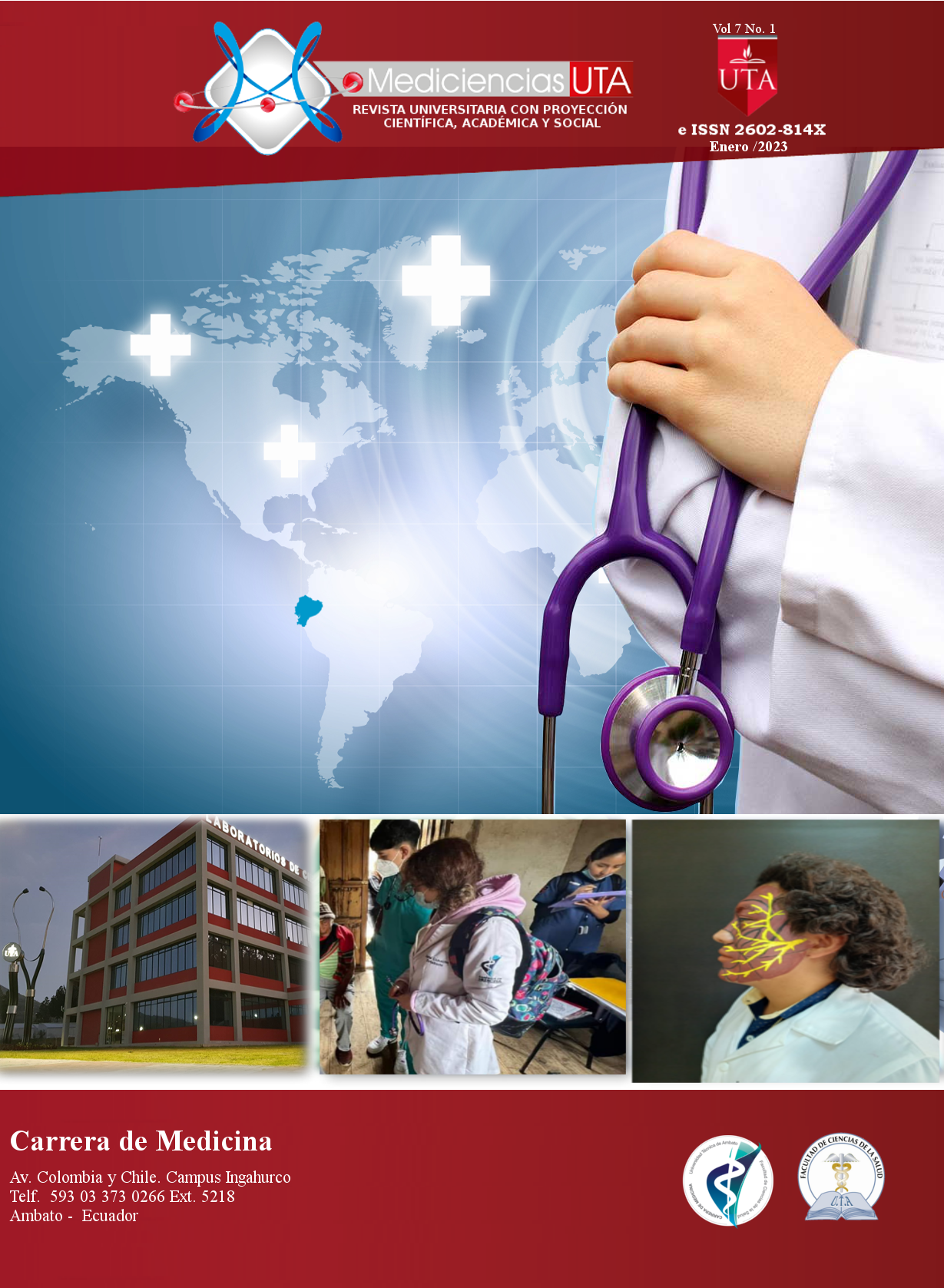Traqueostomía percutánea por dilatación. Artículo de revisión.
Contenido principal del artículo
Resumen
Introducción: La traqueostomía percutánea por dilatación (TPD), es un procedimiento de actualidad en la unidad de cuidados críticos (UCI), que se realiza en pacientes intubados y conectados a ventilación mecánica, fue descrita por primera vez en 1985 por Ciaglia et al, como una técnica, que al momento ha evolucionado con la incorporación de la fibrobroncoscopía y la ecografía de la vía aérea durante el procedimiento, así como también por el desarrollo de una gran variedad de dispositivos disponibles para su realización. Es un método mínimamente invasivo, que sirve para establecer una vía aérea artificial, mediante la colocación de un traqueostomo. Objetivo general: Evaluar la utilidad de la traqueostomía percutánea en cuidados críticos. Objetivos específicos. Describir la técnica de la traqueostomía percutánea en cuidados críticos. Determinar las principales indicaciones y contraindicaciones de la traqueostomía percutánea en cuidados críticos. Materiales y métodos : Se realizo revisión de artículos científicos actuales obtenidos de bases de datos de alto prestigio y reconocimiento internacional tales como Pubmed, revistas de cuidados críticos: critical care, JAMA, British journal of anaesthesia, Chest, revisión de datos provenientes de estudios observacionales, ensayos controlados aleatorizados, meta-análisis, revisión sistemática de la literatura, guías, estudios descriptivos, retrospectivos y opiniones de autores sobre el tema: traqueostomía percutánea por dilatación, con selección de 33 artículos, en su gran mayoría de los últimos 5 años. Resultados : La principal indicación de traqueostomía percutánea que se realiza en unidad de cuidados intensivos, es para los pacientes con intubación y ventilación mecánica prolongada, para evitar la formación de: traqueomalacia, estenosis traqueal, infecciones asociadas al tubo, neumonía asociada a ventilador mecánico, entre otros trastornos Conclusiones : Se concluye que la TPD es una técnica no emergente, de mucha utilidad en el paciente crítico en ventilación mecánica, que tiene una intubación prolongada y que requiere la realización de este procedimiento, para evitar complicaciones y que ha demostrado disminuir el tiempo de ventilación mecánica y el tiempo de estancia en el área de cuidados intensivos, brindando beneficio al paciente intubado para ser desconectado del soporte ventilatorio de forma temprana.
Descargas
Detalles del artículo

Esta obra está bajo una licencia internacional Creative Commons Atribución-NoComercial-CompartirIgual 4.0.



